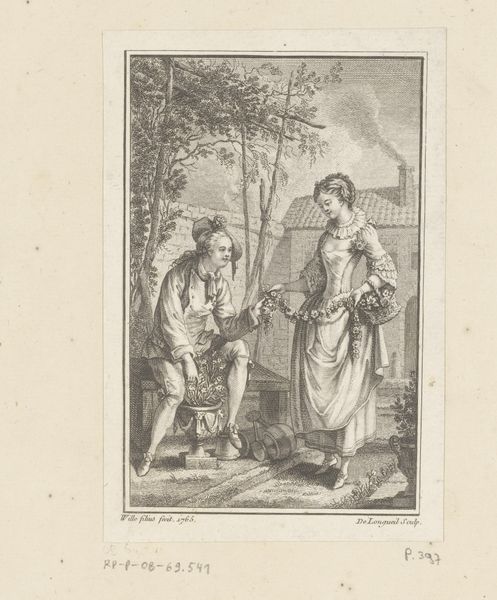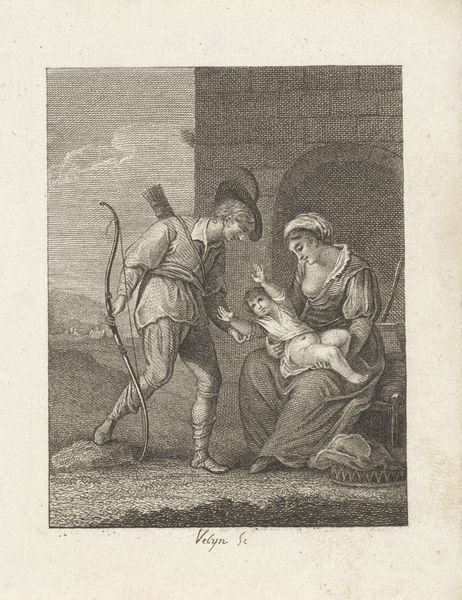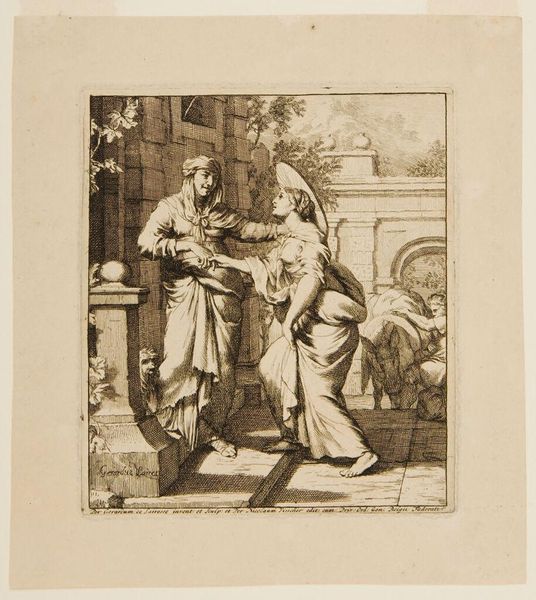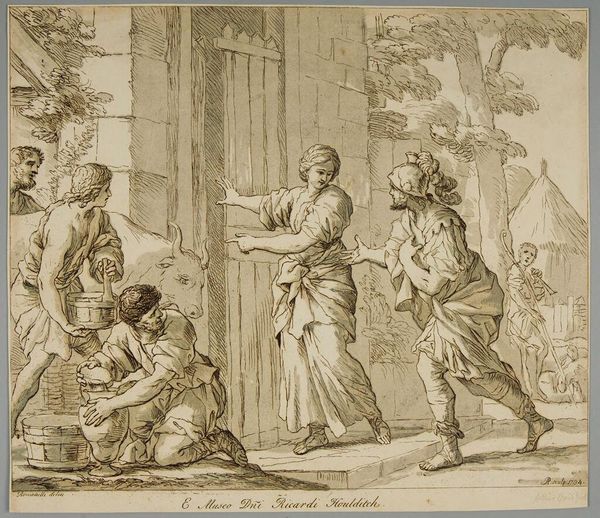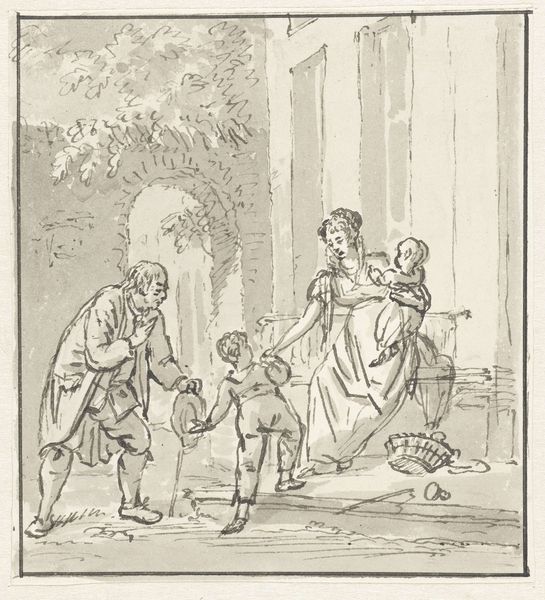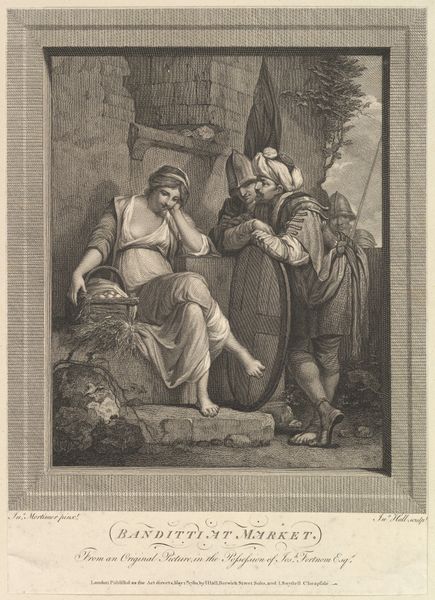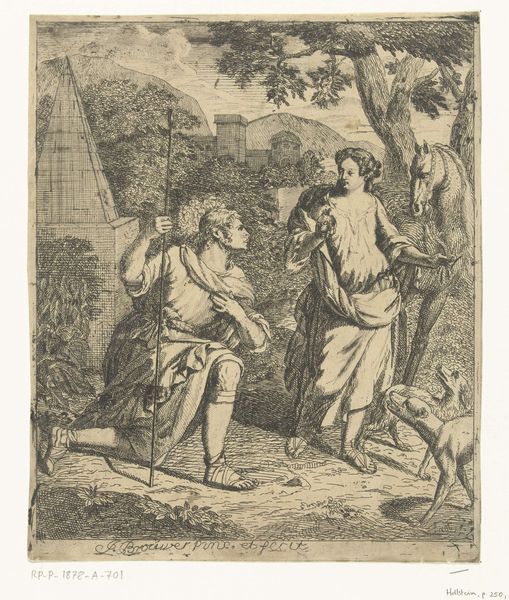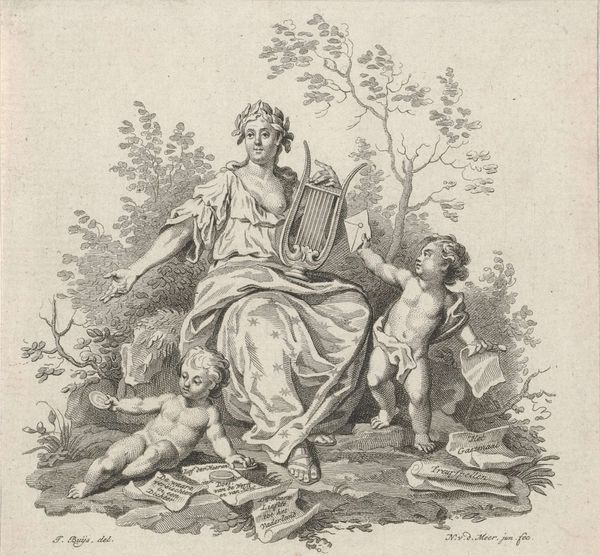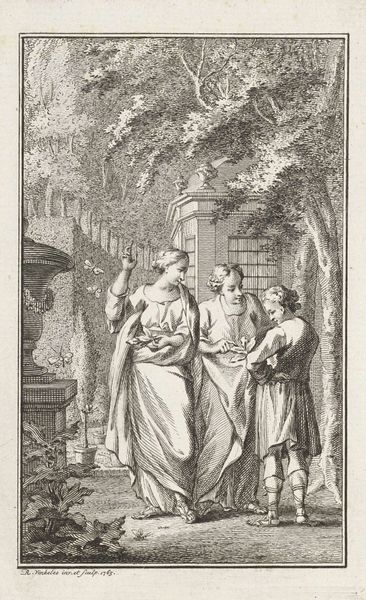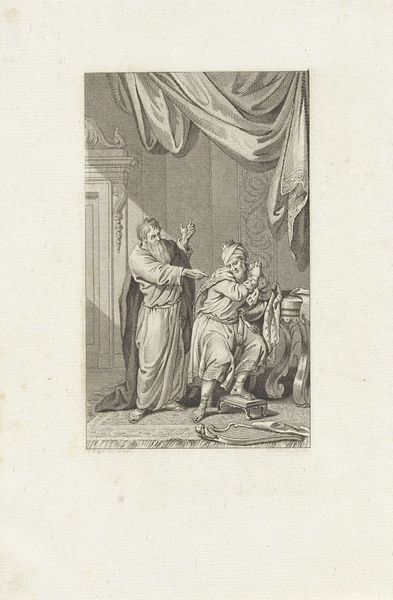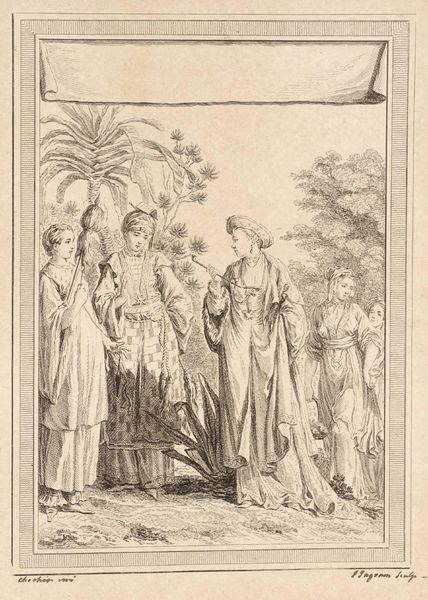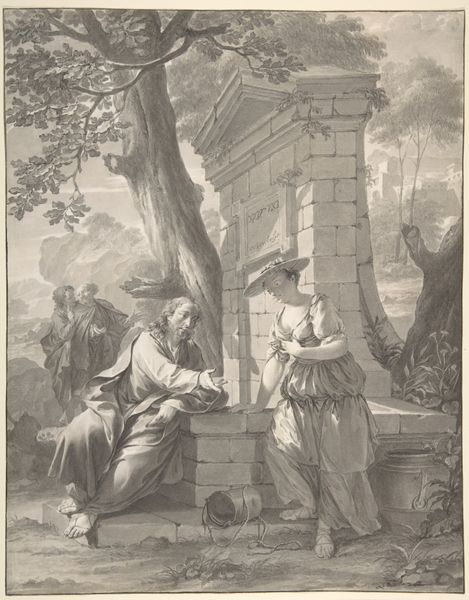
drawing, watercolor
#
drawing
#
narrative-art
#
baroque
#
figuration
#
watercolor
#
watercolour illustration
#
history-painting
Dimensions: height 330 mm, width 210 mm
Copyright: Rijks Museum: Open Domain
Curator: Welcome. We're looking at "Jakob vlucht uit zijn ouderlijk huis" - or Jacob Fleeing His Parental Home. It’s a watercolor drawing by Elias van Nijmegen, made sometime between 1677 and 1755. Editor: The watercolor gives it a soft, almost dreamlike quality. The color palette is restrained; pale browns and grays, but there is a clear formal hierarchy established between the figures through their placement within the composition. Curator: It depicts Jacob’s departure, a moment fraught with complex emotions—fear, uncertainty, but also hope for a new beginning. Notice the almost theatrical staging. Jacob stands before his father and possibly Isaac or another relative in front of a monumental structure; the man is directing Jacob elsewhere. The setting, evoking classical architecture, infuses the scene with gravity and timelessness. The staff serves as a symbol of journey but also spiritual support, or a divine protection in uncertain times. Editor: From a structural perspective, observe how the composition draws our eye from the standing figure on the left to the seated figure on the right, creating a visual flow across the plane. The architectural background both frames and provides a stable counterpoint to the figures’ implied movement. Semiotically, the staffs function as signifiers of both vulnerability and agency. Curator: Absolutely. They indicate Jacob’s reliance on something beyond himself, a higher power guiding his steps, as the title says, away from his parental home. And notice how Nijmegen renders the figures’ expressions - that anxiety in Jacob’s gestures is culturally coded, signaling to the contemporary viewer the weighty emotional toll of departure. These symbols resonated deeply with the stories and cultural understandings of the Baroque era, so the watercolor rendering seems unusual in the history of these types of stories, which have typically been expressed in a much more emphatic tone. Editor: Indeed, a modern viewer might interpret these formal choices—muted tones and carefully balanced composition—as creating a narrative of both loss and opportunity. It is this tension that allows us to engage with Jacob’s story today. Curator: Seeing through your structural interpretation, this piece has enriched my appreciation. Thank you. Editor: And thank you. I see greater depth in this work with its interplay of religious symbolism and artistic representation, more so than when I first glanced at the watercolor alone.
Comments
No comments
Be the first to comment and join the conversation on the ultimate creative platform.
